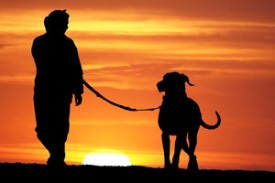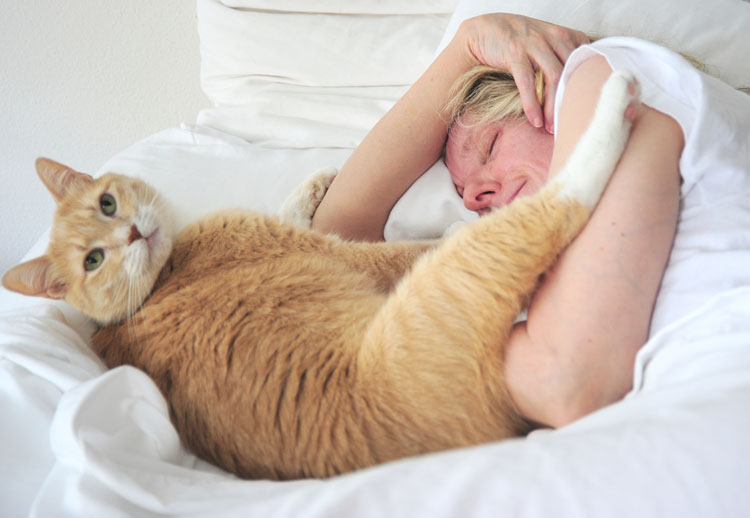Transitioning From Daylight Savings Time
How to convince your pets it really isn’t time to eat, sleep or play.

Switching to Daylight Savings Time in the spring is hard on most people. You must get up an hour early, drive to work in the dark, take lunch before you’re hungry, try to go to sleep an hour before you’re tired. It’s like having jet lag without leaving town. The return to normal time and the gain of an hour are usually easier—unless you are making the transition with pets in the house.
Humans are diurnal, which means they are naturally most active during daylight hours. Dogs and cats are crepuscular, or most active around sunrise and sunset. Even though canines and felines in the wild are naturally attuned to daily cycles of light and dark, the pets in your house are following the schedule you set for them. You choose when to turn on the lights in the morning, when to feed them, when to walk them and when it’s time for lights out. A one-hour delay in these activities can cause confusion and stress in both dogs and cats. Extra affection and attention during this time will help them adjust more easily.
On the day after Daylight Savings Time ends, you’ll want to take advantage of an extra hour’s sleep, but your dog will still want to go outside and pee and your cat will still walk on you and purr for attention at the usual time.
The easiest way to help pets adjust is to move activities forward incrementally rather than by an hour all at once. You can transition to the new wake-up time this way. Set the alarm 10 or 15 minutes later each day until everyone is getting up at the correct time. You won’t get that extra hour of sleep, but your pets will have a smoother transition to the new schedule. Feeding time is also easily adjusted this way. These incremental adjustments will also make your own transition to the new time easier.

Since dogs are more attuned to human activities, they will probably accept these changes as soon as they realize that they will get their meals and walks, just a little later than expected. Cats, on the other hand, are notoriously oblivious to human needs and are more likely to complain loudly if a meal is late. If you free-feed your cat dry food, the transition shouldn’t be an issue, but if she’s made to wait for her breakfast and dinner, you’ll hear about it.
However, some activities must shift by an hour. If you are away from the house at work all day and your dog has to wait an extra hour to go outside and relieve himself, accidents can happen. Be patient with these incidents and don’t punish him. He’ll adjust within a few days and your household will once again run like a well-oiled machine—at least until Daylight Savings Time returns in the spring.
About the Author: Lisa King is a freelance writer living in Southern California. She is the former managing editor of Pet Product News International, Dogs USA, and Natural Dog magazines. Lisa is also the author of the well-received murder mystery novel “Death in a Wine Dark Sea” and the recently released “Vulture au Vin.”





